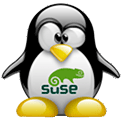NAME
ppmbrighten - change a PPM image’s Saturation and Value
SYNOPSIS
ppmbrighten [-normalize] [-saturation [+|-saturation_percent]] [-value [+|-value_percent]] ppmfile
OPTION USAGE
All options can be abbreviated to their shortest unique prefix.
DESCRIPTION
This program is part of Netpbm(1)
ppmbrighten increases or decreases the Saturation and Value (from the HSV color space) of each pixel of a PPM image. You specify the per centage change for each of those parameters.
You can also remap the colors of the pixels so their Values cover the full range of possible Values.
Hue-Saturation-Value, or HSV, is one way to represent a color, like the more well-known RGB. Hue, Saturation, and Value are numbers in the range from 0 to 1. We always capitalize them in this document when we mean the number from the HSV color space, especially since "value" as a conventional English word has a much more abstract meaning.
Value is a measure of how much total light intensity is in the color, relative to some specified maximum (the PPM format is also defined in terms of a specified maximum intensity -- For the purposes of this program, they are the same). In particular, it is the intensity of the most intense primary color component of the color divided by the maximum intensity possible for a component. Zero Value means black. White has full Value.
Hue is an indication of the secondary color with the same intensity that most closely approximates the color. A secondary color is made of a combination of at most two of the primary colors.
Saturation is a measure of how close the color is to the color indicated by the Hue and Value. A lower number means more light of the third primary color must be added to get the exact color. Full Saturation means the color is a secondary color. Zero Saturation means the color is gray (or black or white). Decreasing the saturation of a color tends to make it washed out.
If it is impossible to increase the Value of a pixel by the amount you specify (e.g. the Value is .5 and you specify +200%), ppmbrighten increases it to full Value instead.
If it is impossible to increase the Saturation of a pixel by the amount you specify (e.g. it is already half saturated and you specify +200%), ppmbrighten increases it to full Saturation instead.
For a simpler kind of brightening, you can use pamfunc -multiplier simply to increase the intensity of each pixel by a specified per centage, clipping each RGB component where the calculated intensity would exceed full intensity. Thus, the brightest colors in the image would change chromaticity in addition to not getting the specified intensity boost. For decreasing brightness, pamfunc should do the same thing as ppmbrighten.
ppmflash does another kind of brightening. It changes the color of each pixel to bring it a specified per centage closer to white. This increases the value and saturation.
EXAMPLES
To double the Value of each pixel: ppmbrighten -v 100
To double the Saturation and halve the value of each pixel: ppmbrighten -s 100 -v -50
OPTIONS
| -value value_percent | |
| This option specifies the amount, as a per centage, by which you want
to change the Value of each pixel. It may be negative.
| |
| -saturation value_percent | |
| This option specifies the amount, as a per centage, by which you want
to change the Saturation of each pixel. It may be negative.
| |
| -normalize | |
| This option causes ppmbrighten to linearly remap the Values
of the pixels to cover the range 0 to 1. The option name is wrong --
this operation is not normalization (it was named in error and the
name has been kept for backward compatibility).
ppmbrighten applies the brightening that you specify with the -value option after the remapping. Before Netpbm 10.14 (March 2003), your input must be from a seekable file (not a pipe) to use -normalize. If it isn’t, the program fails with a bogus error message.
| |
SEE ALSO
pgmnorm(1) , ppmdim(1) , pamfunc(1) , ppmflash(1) , pamdepth(1) , pnmgamma(1) , ppmhist(1) , ppm(5)
AUTHOR
Copyright (C) 1990 by Brian Moffet. Copyright (C) 1989 by Jef Poskanzer.
Permission to use, copy, modify, and distribute this software and its documentation for any purpose and without fee is hereby granted, provided that the above copyright notice appear in all copies and that both that copyright notice and this permission notice appear in supporting documentation. This software is provided ’as is’ without express or implied warranty.
